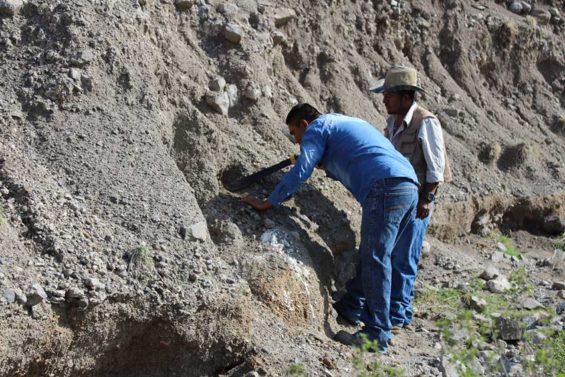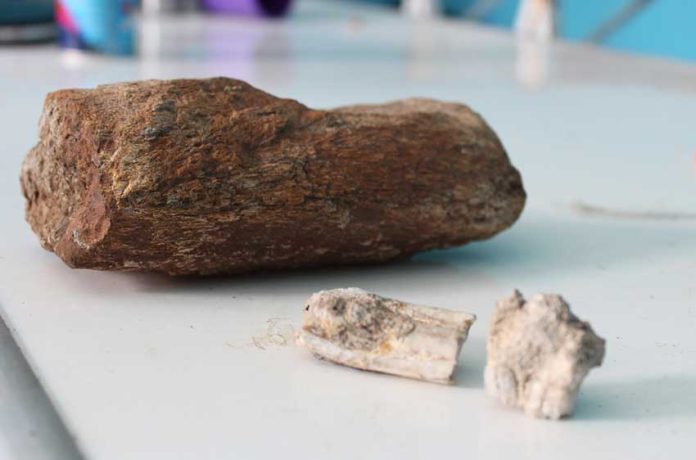More than 10,000 years ago, distant ancestors of modern-day elephants roamed the land where the state of Oaxaca is today.
That’s the conclusion of Eduardo Jiménez Hidalgo, a scientist at the Puerto Escondido campus of the University of the Sea (Umar) after examining fossilized bone fragments found in the southern state.
“The remains found in San Martín de los Cansecos belong to a prehistoric animal that lived during the Ice Age, identified as a gomphothere of the Cuviernonius genus, distant relatives of the current elephants,” he said.
The bones — which included parts of a jaw, a rib, a shoulder blade and a pelvic bone — were discovered by Raúl Pérez Vega, a mine worker and former employee of the federal Mexican Geological Survey.
In the latter job, Pérez had learned how to identify fossil remains so when he fortuitously came across the bone fragments while walking with his family he instinctively knew that he had found something out of the ordinary.

He subsequently sought expert opinion in a paleontology Facebook group through which he was able to contact Carlos Castañeda Posadas, a professor at the Benemérita Autonomous University of Puebla who in turn put him into contact with Jiménez Hidalgo.
Pérez sent photos of the bones to the Puerto Escondido-based biologist, who was able to confirm their significance.
In May, Pérez accompanied a group of municipal officials and paleontologists to the site known as El Palenque, which is located about 55 kilometers south of Oaxaca city.
There, the group collected the fossilized fragments so that they could be tested to determine their exact age and to learn more about the species.
After they have been treated to avoid deterioration, it is expected that they will be put on display in the same municipality where they were found.
Given the significance of Perez’s find, Jiménez said that at some stage in the future a fossil survey will be carried out in the region.
He added that there is a long history of fossil discoveries in Oaxaca that span the Carboniferous, Jurassic, Cretaceous, Paleogene, Miocene and Pleistocene periods.
Researchers from the Institute of Anthropology and History (INAH), the National Autonomous University (UNAM) and other universities have all studied the fossils, Jiménez said.
“Various remains of marine and continental animals have been found, for example carboniferous trilobites, turtles and Jurassic marine reptiles . . . as well as a great variety of Pleistocene mammals such as bison, camels, horses, tapirs, terrestrial sloths, mammoths, gomphotheres and rodents.”
Source: Conacyt Prensa (sp)
